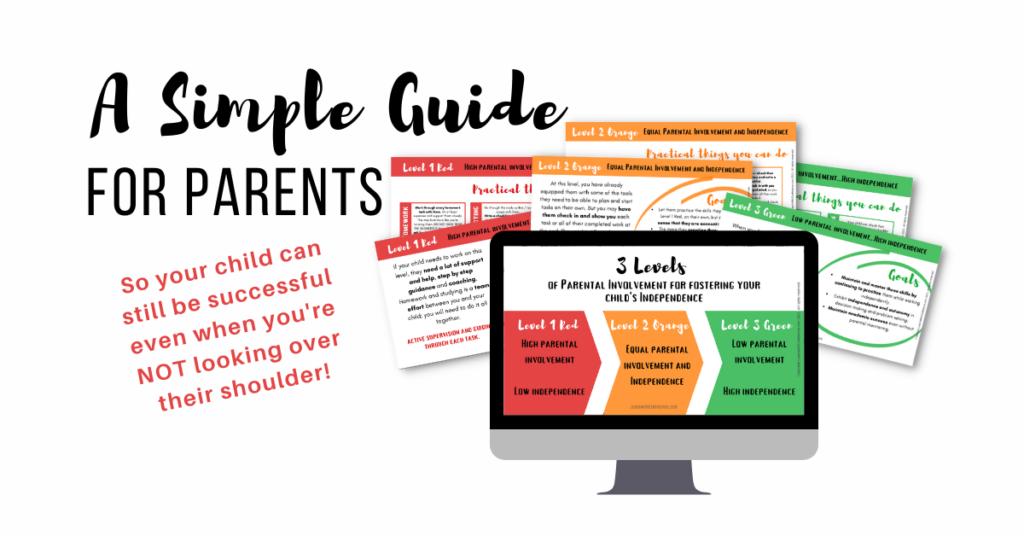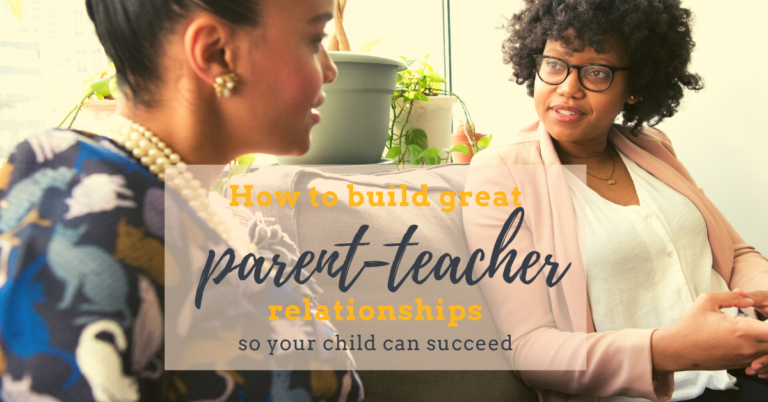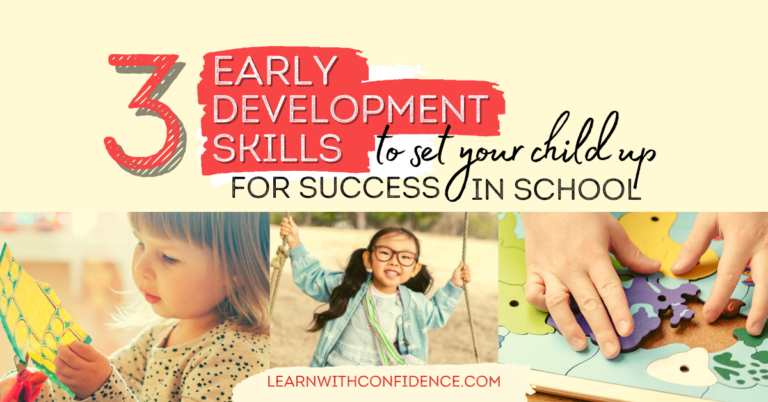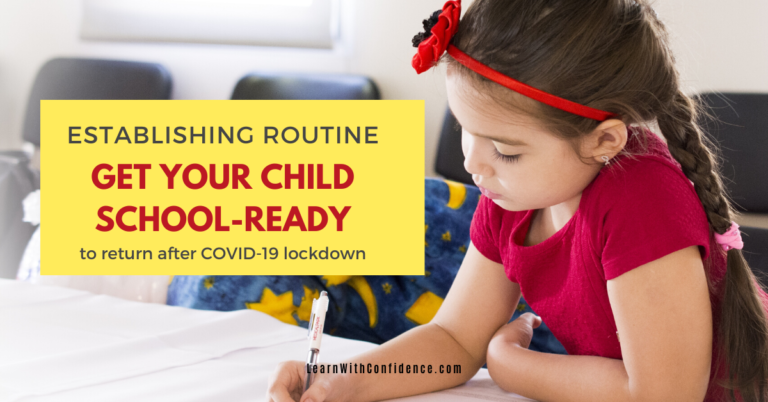Foster independence in your child so you don’t have to look over their shoulder, checking school work, all the time!
It’s time to foster independence in your child so you don’t have to constantly look over their shoulder to make sure they are keeping up with their school work. Most parents want their child to be more independent without sacrificing their child’s academic success. Here’s how you can train and prepare them, step-by-step, to take more responsibility for their learning while still holding them accountable.
I’ve just had parent-teacher meetings this past week. I have so enjoyed connecting with my student’s parents and hearing their input about their child’s progress this term. I teach 5th graders and every year, without fail, one of the biggest concerns parents have is how involved they should be in helping their child with their school work. Kids don’t want mom or dad looking over their shoulder checking on every task or piece of work, but the reality is that they still need that monitoring and support.
So, is it possible to find a balance between “keeping a finger on the pulse” and fostering your child’s independence and ensuring they are successful academically?
Why micro-managing your child doesn’t work.
“Keeping your finger on the pulse” doesn’t have to look like micromanagement.
Micromanagement is all about having someone watching over your shoulder. Essentially, they don’t believe you can do it as well as they can. They try to make you do it their way, correcting you every time you do something ‘wrong’. They’d prefer to swoop in and take over so it can be done perfectly or the way they think is best. They do not value your autonomy or growth.
Are you micro-managing your child?
You see, the problem with micro-management is that it comes from a place of mistrust. And if that’s the foundation of your relationship with your child, you will have problems. You want to be your child’s safe place; the person they WANT to come to when they mess up (because they will!). And if there is no feeling of trust between you and your child, you can’t be that person. Children feel safe when they feel they can trust.
And when they feel safe, they can explore and try new things, they can test their strength. They know they have a safety-net. Their self-esteem and a sense of autonomy can improve. They can become more intrinsically motivated and make good choices. (Check out this INCREDIBLE Parenting Summit Series on building secure relationships in our families so our children can reach their full potential!)
You can “keep a finger on the pulse” without micromanaging your child – and it’s all about becoming your child’s accountability partner.

Foster independence in your child by being their accountability partner.
An accountability partner is someone who keeps you grounded, gives you perspective, keeps you on track with achieving your goals. They help you stay focused on what’s important and where your priorities should be. They help you beat analysis paralysis and procrastination.
When you select someone to be your accountability partner, you invite them to help you grow and improve. You give them permission to give you constructive criticism and speak truth into your life and situation and keep you on track.
A good relationship, built on trust, is paramount!
And here’s the BEST NEWS of all for you Mama! You you’ve been fostering this relationship from day one! Every time your baby cried and you jumped up to comfort and hold them. Every time they were hungry and you fed them. All those times they had a need and you met it, you filled their ‘trust tank’.
You have the foundation they need to be able to build an accountability relationship.
A framework to help you foster independence in your child.
This framework is tool for understanding how much input your child needs from you to equip them with the skills they need to become more independent.
The level of parental involvement will depend on your child’s age, stage of development and a good many other factors. Some children need more monitoring, others don’t. Some are more driven and others need a push. If you’ve fostered independence from when they were toddlers they are likely to be more capable of working independently when they are older.
No Micro-management.
None of these levels involves micro-management – even the level that requires the most input. Remember that our goal is always to foster independence from a relationship built on trust, and micromanagement is not built on trust.
As you equip your child, they will progress through the levels to a place of greater independence. The emphasis here is on progression. Every child and situation is different and the speed a child progresses from one level to another will differ too.
The Levels are fluid and flexible.
One must also remember that the levels are fluid. So, your child might move back and forth between them. In some areas you might need to work in level 1 offering a lot of support, for example, if they have some learning gaps that you’re trying to close. In other areas they be able to work more independently. Sometimes child can be working very independently in level 3 but they get a really challenging task or there is some unsettling life event, or the work suddenly piles up and they feel completely overwhelmed, and they suddenly need more input such as in level 2 or even level 1.
IMPORTANT: You are not doing the work for the child or giving them the answers – this does not foster independence. It’s all about asking the right questions, guiding their problem solving abilities and equipping them with the ability to think of solutions even when you’re not sitting there with them.

The three levels of parent involvement that foster independence in your child.
Level 1 Red – High parental involvement, low independence.
If your child needs to work on this level, they need a lot of support and help, step-by-step guidance and coaching. Homework and studying is a team effort between you and your child; you will need to do it all together. This level is characterized by active supervision and guiding through each task.
Level 2 Orange – Equal parental involvement and independence.
In this level, you can loosen the reins, so to speak, and allow a little more independence. This level is characterized by ‘checking in’ and accountability rather than ‘ active supervision’.
At this level, you have already equipped them with some of the tools they need to be able to plan and start tasks on their own. But depending of how much accountability, they need – you might, have them come and show you every time a job is done, or, you might have them check in and show you at the end of the homework time to check off everything on their to do list. They might still need to come to you to help them think through how to answer a question or solve a problem.
Level 3 Green – Low parental involvement, high independence.
When you finally reach this level, your child is able to manage their own homework and studying tasks. They may still want to check in for difficult things or when they feel overwhelmed or challenged by the work.
All the skills they need to plan and organize their work have been learnt and practiced, to the point that they are confident to complete their work independently and continue to achieve success academically.
Get started using THIS resource to foster independence in your child.
But HOW do we actually do all that as parents?
I have an answer for you that is not only effective, but it’s completely do-able too!
This resource outlines the exact things you can do as their accountability partner and coach, in their homework and studying and organizational skills, to lead them into a place of greater independence and success!
This FREE Simple Guide for Parents will help you discover
- what level of involvement your child needs.
- how to be involved in a way that moves your child to greater independence.
- strategies for developing the skills your child needs to do their homework, studying and stay organized, independently.
Getting your child’s buy-in
One final word and some free tips 😉 Your child is not going to come up with this idea themselves. “Hey – I think my mom would be a great accountability partner for this school thing!” (Though we’d love to hear that!)
Relationship is everything.
A relationship that communicates to your child that you believe they have the capacity to be completely independent. A relationship that fosters a growth mindset and builds a child’s self-esteem and confidence. When you have this kind of relationship, your child will be more open to working with you.
Systems that set you up for success.
From a young age when it comes to school work and homework, you can put systems in place that are “just how we do it”.
From the first day they bring homework home, you set up a system of checking what needs to be done, creating checklists, creating routine of packing books and everything else they need when their homework time is done. When you do this, these things are just automatic – it’s just how we do it.
From the first time they have to study for a test, you guide them through the process of preparing for that.
Then when they’re older, those systems are ingrained and they can continue them without any resistance.
Have a conversation at the beginning of the school year.
It might start like this:
“You’re in 5th grade this year and I know you want to work more independently on your school work. You don’t feel like you need mom to check in all the time etc. And I want that too.”
Ask them which level they feel like they’re in and then let them know you’re there to support them in that level and help them develop the tools and skills they need to move to the next level.
“I would like to be your accountability partner.”
And explain to them how you’re going to move from working closely with them to taking more of a “check-in role” and finally to a place where they can be confident to use all the tools and strategies on their own and consult you for help when they find something challenging or need your support.
Most 4th-7th graders are in the Level 2 Orange, occasionally needing more support (Level 1 Red) and occasionally working more independently in Level 3 Green. Some kids are more self-driven and self-motivated than others. If you’re not sure where your child is at, be sure to get your free download here so you can get some answers.
Save and Share this Post
Pin this image to your favorite Parenting board on Pinterest and share it with your momma friends who also want to help their children become confident, independent people.
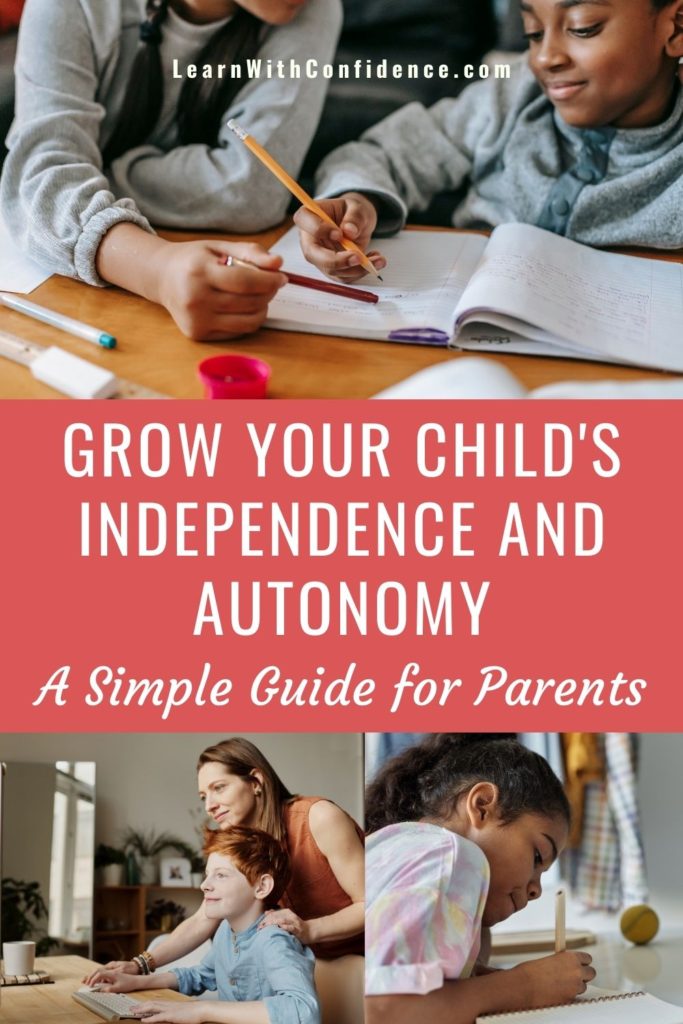

I would love to connect with you and include you in this community of Mommies as we support each other and grow together to become the best moms we can be!
Please subscribe to my emailing list here and I’ll make sure I keep you in the loop on all the latest blog posts, freebies and resources!

